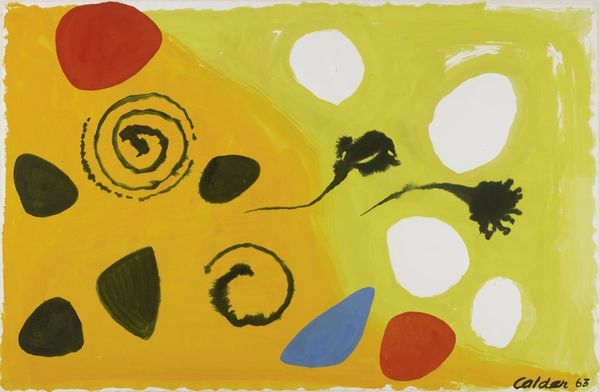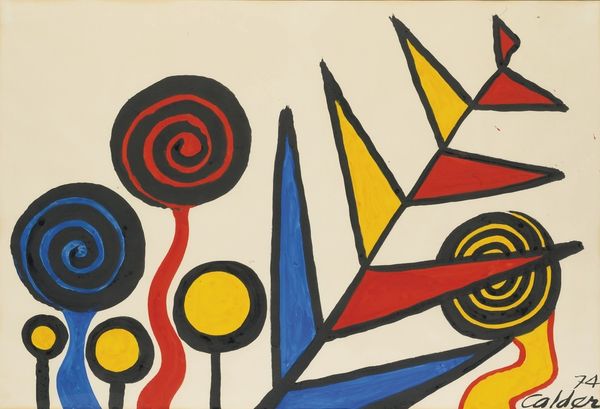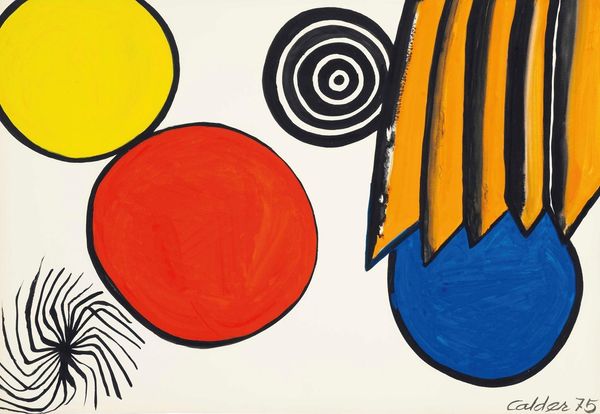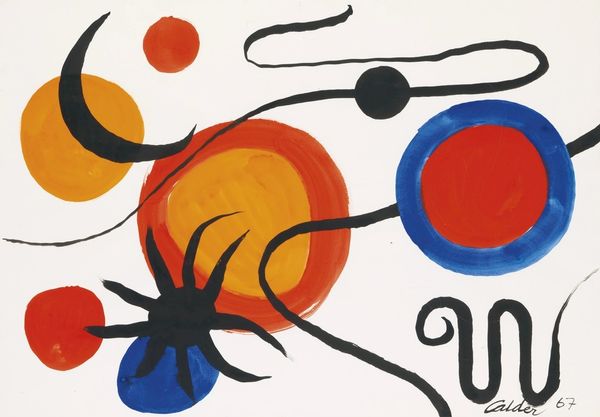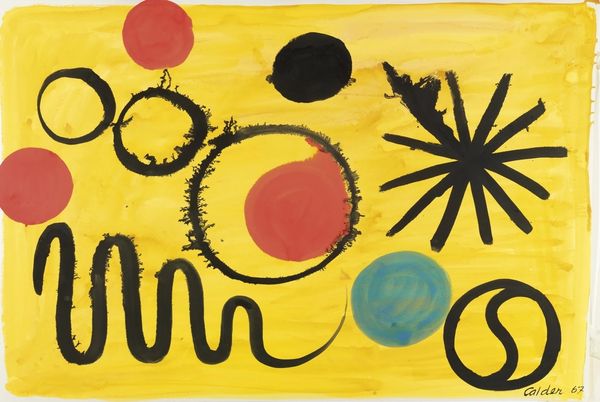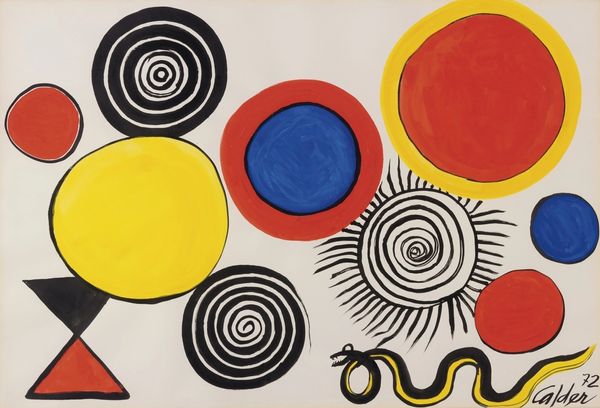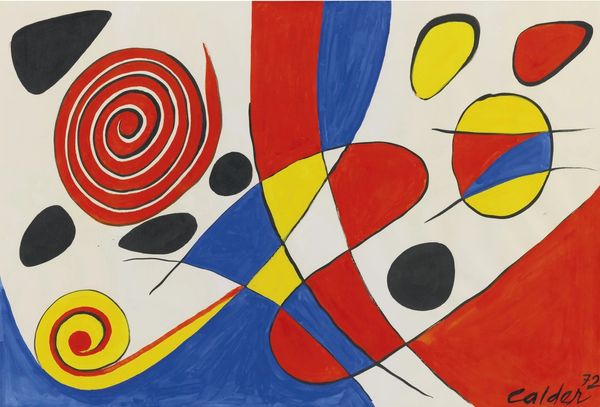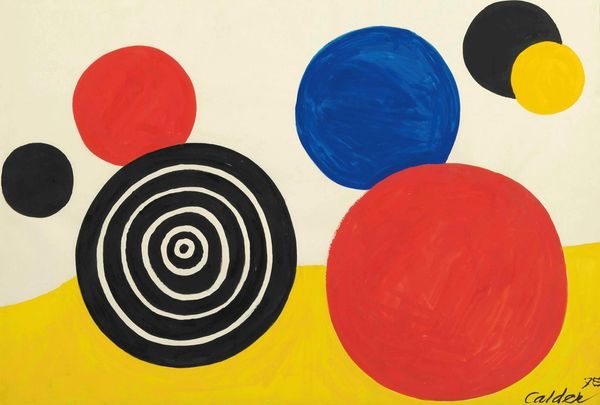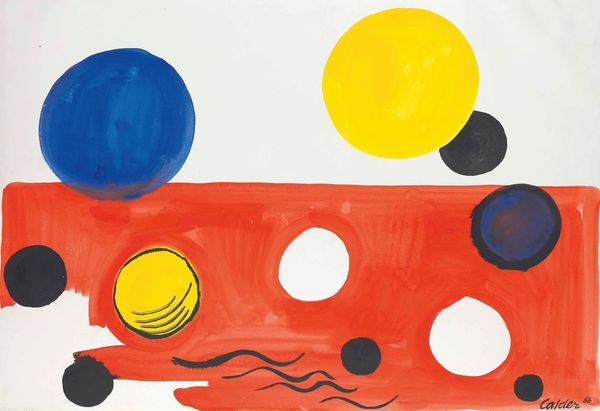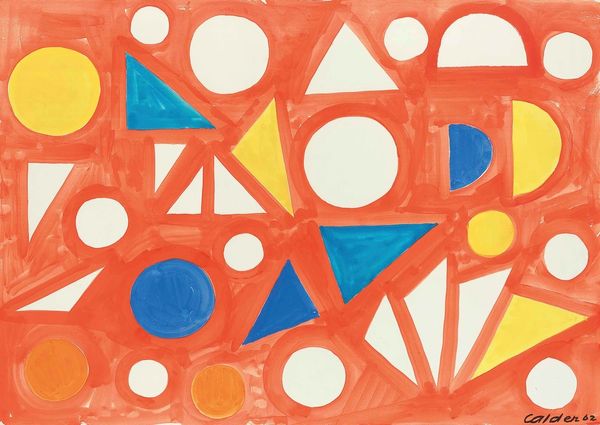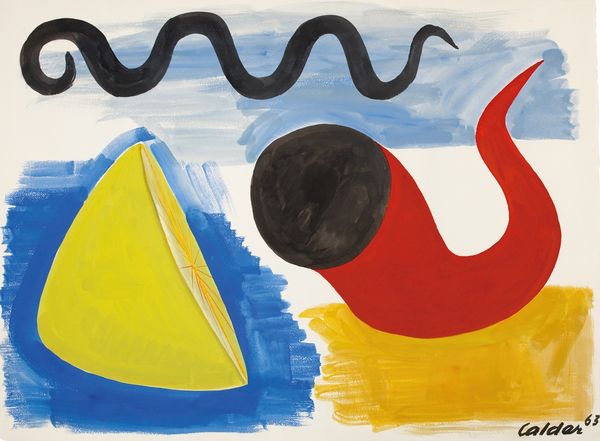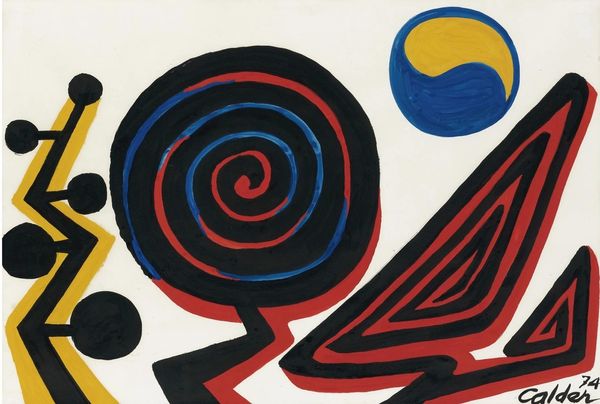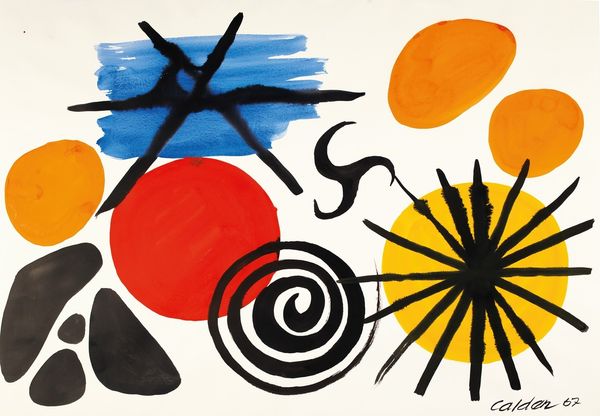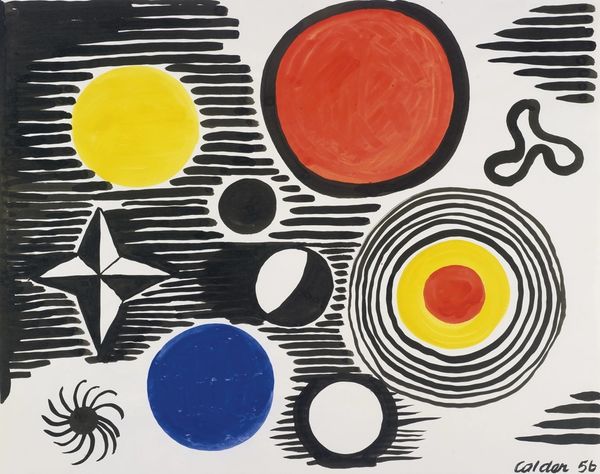
painting, oil-paint
#
abstract-expressionism
#
abstract painting
#
painting
#
oil-paint
#
pop art
#
abstract
#
form
#
geometric-abstraction
#
line
Copyright: Modern Artists: Artvee
Editor: This is Alexander Calder's "Signs," painted in 1944. The bold shapes against the vibrant red immediately strike me. It feels both playful and… slightly unsettling, somehow. How do you interpret this work from a formalist perspective? Curator: A useful starting point is the dialectical tension between the painting's inherent flatness and its suggestion of depth. Notice how Calder utilizes a limited palette – red, black, yellow, and blue – to define distinct forms. These forms, though seemingly disparate, are unified by the picture plane, primarily that saturated field of red, a compositional force that pushes against their individual identities. How do you perceive the relationship between the line and form in the work? Editor: Well, the rigid lines that create the starburst definitely contrast with the squiggly line on the side, which looks almost whimsical. And those solid colored circles feel… grounded? Curator: Precisely. This interplay activates the surface, creating a dynamic equilibrium. Each element is defined by the others through stark juxtaposition. Consider the texture: observe the varying brushstrokes and how they disrupt any notion of a unified surface. Are you perceiving any inconsistencies of paint application that inform the viewing experience? Editor: Yes, now that you mention it, you can definitely see where the brushstrokes overlap, adding more depth. I see how focusing on these aspects alone helps understand the piece better. Curator: Indeed. Through careful consideration of form, color, and material application, the intrinsic qualities reveal a structured approach to pictorial space and surface treatment. Editor: I see it differently now! I appreciate you highlighting those elements. Curator: My pleasure. A focused formal analysis offers tangible access to comprehending the essence of the painting's design and expressive intention.
Comments
No comments
Be the first to comment and join the conversation on the ultimate creative platform.
